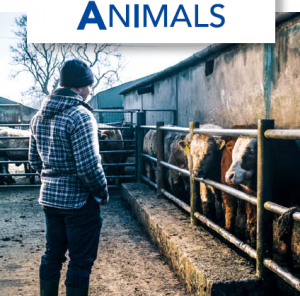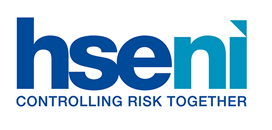Safe handling of livestock on farms

Many injuries caused by cattle result in the farmer being unable to work for months.
Livestock incidents have also claimed the lives of 18 farmers in Northern Ireland in the last 10 years.
Before you start
Before working with Livestock take a moment to Stop and Think!
Think about what you can do if there is a problem. Where animals are not restrained, always check that there is somewhere safe you can get to easily if an animal becomes aggressive. Work out an escape route or refuge before working with cattle.
Think about the animals you are working with. The risk is increased if the animals have not been handled frequently. Bulls and recently calved cows also need particular care.
Think about what you are going to do. Agitated or stressed animals are more likely to be dangerous. Certain tasks, such as veterinary work, may also increase the risk.
Think about how you will do the work safely. Attempting to carry out stock tasks on unrestrained cattle or with makeshift equipment is particularly hazardous. It increases your risk of injury but also causes distress to the animals and wastes valuable time. Be safe. Make sure you have the right equipment.
Remember to think about others who may be hurt: family, employees, visitors such as vets, when handling your cattle. Make sure workers are trained and competent. Never put an inexperienced handler or a child at risk with cattle.
Handling facilities
Every farm that handles cattle should have proper handling facilities, which are well maintained and in good working order.
Collecting pens, the forcing pen and race should be designed to promote cattle movement while protecting workers from being crushed. Gates should be properly hung so that they can open fully against a pen wall. Floor surfaces need to be slip-resistant and in good condition for both the stock and stockman’s benefit.
It is essential that you have a gate to prevent cattle charging forward when you are working in the rear of the crush.
The crush must be secured to the ground or, if mobile, to a suitable vehicle. It needs to be sited so there is a cattle-free working area around it.
Never attempt to treat or work on any animal that is held by gates alone or is free to move at will. Cattle should not be able to enter the area beside the crush while someone is working.
Managing bulls
The hazards of bulls are well known. Following some simple steps can help reduce risks. From an early age the bull should learn to associate people with feeding, grooming or exercise.
All bulls should be ringed at 10 months old and all dairy bulls should be kept in a purpose-built bullpen. Never enter the pen when the bull is loose. Safety signs should also be erected warning of the presence of a bull at the entrance to any building where a bull is kept.
Culling aggressive cattle
Cattle that are known to be aggressive or difficult pose a continuing risk. Animals that have attacked once are more likely to do so again. Culling these cattle at an abattoir is always the safest course. Cattle known to be dangerous should not be sold through a mart or direct to other farmers.
Preventing disease
Zoonoses are diseases passed from animals to humans. Reduce the risk of infection by vaccinating animals where appropriate and always wear suitable protective clothing when handling animals or potentially infected material such as the afterbirth or faeces. It is important to ensure good personal hygiene at all times and to wash and dry your hands before eating, drinking or smoking.
The Stop and Think checklist
The following helpful tips will help keep you safe on the farm.
Always
- make sure handlers are competent and agile
- work out an escape route or refuge before working with cattle
- be careful around cows and heifers with new-born calves
- remember that cows that are ‘on heat’ are unpredictable
- try to keep cattle calm when handling them
- use a stick to assist in directing cattle
- disbud calves early to prevent horn growth
- watch for warning signs of animal aggression, especially in bulls and newly calved cows and heifers
- cull aggressive and difficult cattle as soon as possible
- use well-designed facilities
- regularly check and maintain facilities such as the crush, gates and fences
- keep ground surfaces clean, as far as possible
- protect yourself against disease with proper personal hygiene
Never
- put an inexperienced handler or a child at risk with cattle
- turn your back on a bull or trust a bull
- stress or arouse cattle unnecessarily
- turn your back on a cow following calving
- keep dangerous cattle
- beat or shout at cattle unnecessarily – they remember bad experiences
Remember, many of the steps to stay safe only require a few moments’ thought.
Other safety measures, such as a well-designed and built handling system, may seem expensive, but will last many years.
Handling livestock safely with good facilities will also save a lot of time, and if you consider the business consequences of an injury, costs less than an accident.
Never underestimate the risk from cattle, even with good precautions in place. It could save your life.
Resources
- Animals - safe working with livestock on farms
- Animals - safety around calving time
- Bull safety
- Farmers - get help when working with animals
- Farmwise - your essential guide to health and safety in agriculture - HSE (GB) website
- Handle cattle safely - practical based seminar - Youtube
- Handle cattle safely - theory based seminar - Youtube
- LANTRA training course - Better livestock handling for increased profitability - www.lantra.co.uk
- Preventing or controlling ill health from animal contact at visitor attractions
